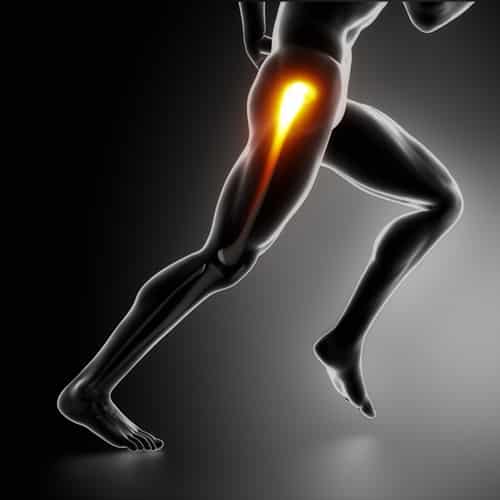Trochanteric Bursitis
What is Trochanteric Bursitis?
In the first instance, lets get the pronunciation right. Trochanteric, pronounced tro-can-te-ric Bursitis presents as hip pain, often when sleeping on your side and on the affected hip.
To really understand what we are dealing with, we must first understand what is a bursa?
Simply put, a bursa is a fluid filled sac or cushion found in parts of the body where the joints offer a big range of movement. These little pockets between your muscles and bones allow the structures of the joint to glide smoothly over each other. Most of the time these structures play their role unnoticed, however when they become irritated and inflamed they become swollen and painful, a condition known as a bursitis.
The hip consists of two bursa. A deep bursa that lies within the structure of the hip and a superficial one which sits on the outside of the bony hip joint. The body hip joint is called the greater trochanter, hence when the bursa becomes inflamed, it is called Trochanteric Bursitis.
Of the two bursae, it is usually the superficial one that is most commonly involved in trochanteric bursitis with the deeper bursa becoming involved in more severe cases.
Symptoms of Trochanteric bursitis
Symptoms of trochanteric bursitis can be varied, however symptoms typically present as follows:
- Pain and swelling over the side of the hip which can travel down the outside of the leg.
- Pain when sleeping on your side, especially the affected hip.
- Pain when standing up especially if you have been sitting for a long time.
- Symptoms are aggravated by walking or running activities.

What Causes Trochanteric Bursitis?
A trochanteric bursa can be as a result of a one-off trauma such as a hit or a fall, but it is more likely as a result of repeated wear and tear based around sporting and lifestyle activities and the dreaded aging!
It is easy to understand how an isolated incident causes injury to a bursa. It is not so easy to understand why everyday activities would end up causing such severe pain.
To understand this… we need to start at the feet! Every time we take a step, the way the foot is placed on the ground has an impact on what happens further up the body. So imagine if you will, your arches collapsing as you place your foot down. The first joint to be stressed by this faulty positioning is the knee, then next is the hip. Repeating this movement day-in, day-out, it is easy to see how the pain starts to build up through every day activities.
How to prevent Trochanteric Bursitis
- Well fitting footwear with good arch support to help improve foot biomechanics
- Improve core muscle control
- Gradually increase your training load.
How is Trochanteric Bursitis Diagnosed?
Trochanteric Bursitis is a relatively easy condition to diagnoses when a thorough history and physical examination is conducted. Diagnosis can be confirmed via diagnostic imaging such as an ultrasound or MRI.
Treatment of Trochanteric Bursitis
With the treatment for trochanteric bursitis, the first priority is pain relief by reducing the swelling and inflammation within the bursa.
This is achieved using a combination of the following:
- Ice to the affected area
- Oral or topical anti-inflammatories
- Change exercise habits so the injury is not further aggravated
- Once the pain is under control, physical therapies such as dry needling, soft tissue massage, ultrasound, laser, supportive taping and interferential therapy (form of TENS) can assist with easing the symptoms further.
As the condition improves, it is important to address the initial causes of the injury. An assessment of foot biomechanics, gait patterns and muscle balance or instability issues in the hip, core and lower back should take place. Only by addressing these underlying issues through structured rehabilitation exercises can one be assured that the trochanteric bursitis is not only dealt with in the short term, but also prevented from reoccurring in the future.
In those situations where conservative care fails to provide satisfactory results, then referral for a cortisone injection or a last result surgery would be considered.
At Walkley Chiropractic our skilled Chiropractors can develop a treatment plan, not only dealing with the acute pain of bursitis, but will also develop a rehabilitation programme, to help prevent a recurrence of the problem in the future.
